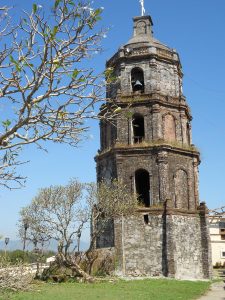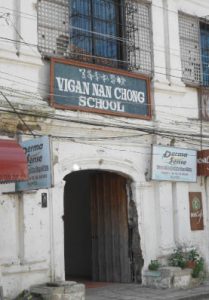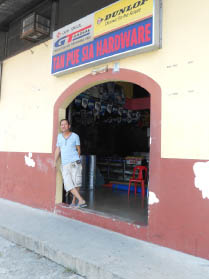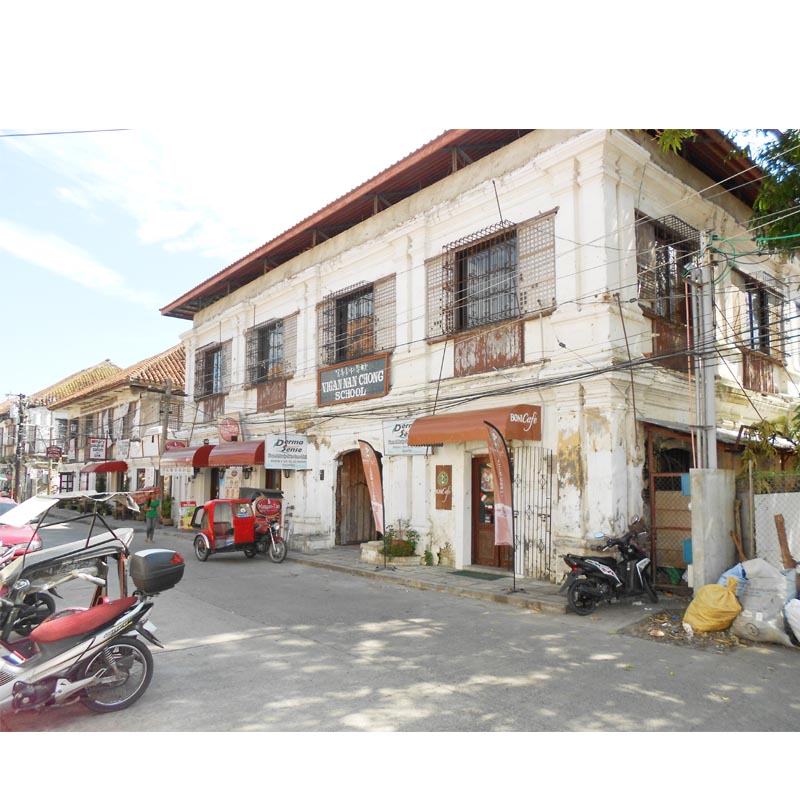 Municipal and provincial authorities vigorously promote Vigan, the major tourist hub in the province of Ilocos Sur. After all, its capital City of Vigan was included in the UNESCO Heritage list on Dec. 2, 1999.
Municipal and provincial authorities vigorously promote Vigan, the major tourist hub in the province of Ilocos Sur. After all, its capital City of Vigan was included in the UNESCO Heritage list on Dec. 2, 1999.
Vigan’s main tourist target is the people from Luzon. Air transportation to reach Vigan either from further north or from the south is limited. There is only one nearby airport, the Laoag International Airport, to Vigan for commercial flights. From Laoag Airport, it is a two-hour bus ride to the city. Hence, the preferred transport from Manila to Vigan is by land, which takes about 10 hours. Many types of buses, including comfortable air-conditioned ones, ply the Vigan route from Manila.
In 2017, after an eight-year hiatus, the Vigan Domestic Airport (called Mindoro Airport) opened for commercial flights (Sea Air and chartered flights) from Manila (twice a week) in February and from further north like Batanes commenced in April.
Heritage preservation
Architecture in the city of Vigan follows specific guidelines and rules on design and materials used. This preserved zone is remarkable and stands proof of the influence of Vigan in Northern Luzon during the Spanish colonial time. The city was a stopping point in the silk trade that linked Asia, the Middle East and Europe. With its products of gold, beeswax and wood, it became a flourishing trading post. Vigan gradually imposed itself as a center of economic and religious activities as well as a political seat when Juan de Salcedo was named governor of the province of Ilocos in 1572.
The exceptional architectural character of the city, considered Spanish is in truth a blend of influences – Mexican, Chinese, Filipino – such as the capiz paneled sliding windows. The ancient houses, called bahay na bato, are in themselves a complete little urban compound: the ground floor built in stone traditionally served as a storage space for goods or products for sale, or a working space. The first floor, a bright and spacious area built in wood, is the sala and is the living space of the family.
Today, some families have transformed their houses into museums and have opened them to public visitors, like the Crisologo Family house (Calle Liberacion) and the Syquia Family house (owned by the in-laws of former President Elpidio Quirino) along Quirino Boulevard, corner Mabini Street.
Crisologo Street is the only street that has received a special budget for its pavement of cobblestones. The house owners are in charge of the repairs in their buildings. Most of these have been converted into souvenir or antique shops for tourists.
Some are in a bad state of disrepair, particularly the roofs. Some are rented out to restaurant chains as one way for owners to maintain their property. The houses situated near the Burgos and Salcedo plazas have been refitted by restaurant chains such as Max’s or Greenwich, following the architectural standards specific to the UNESCO classification.
Except on Crisologo Street where traffic is regulated (only kalesas are allowed), streets are one-way in the heritage district as they are relatively narrow. No such traffic regulation is imposed in the rest of the city. The other roads, streets, and buildings fulfill common functions. So, there is a need to reflect on how heritage and residential dwellings may coexist.

Tourism and preservation
The heritage district is a residential district and an area of activities evolving with the economic situation of the city and the province. Some people would like to see the historic center of Vigan be preserved as a museum, with others denouncing how the city has become too touristy and commercial, and that several buildings of exceptional vintage are left un-maintained. All over the city there is a feeling of neglect amongst the visible ruins, and local authorities do not have a say on the renovation of the buildings. It is also impossible for them to buy all the abandoned buildings.
Tourism, particularly the development of the hotel industry, may possibly be the answer to the preservation of the architectural heritage in Vigan. The demand for hotel accommodation in a colonial style room remains strong, and a number of bahay na bato have been transformed into such, catering to couples booking for their honeymoon or wedding. The wedding photos of course taken on Crisologo Street are fabulous!
Some of the buildings are sold to investors to guarantee their preservation. Renovations are done as the buildings get sold. Hence, the historical center of the city is not renovated in a uniform manner. What prevails is the renovation of the façades; inside, the high ceilings of rooms disappear, rooms are made smaller, noise protection windows are installed, sanitary facilities are added. In the end, the bahay na bato is greatly transformed to ensure comfort and profitability for the hotel.
There are other ubiquitous sights tied to tourism in the district: the kalesa drivers, for instance, wear a special uniform with a shirt typical of the Spanish colonial period that lends more authenticity. Old-style traditional eateries compete with fastfood chains.
Beyond tourism, the heritage district is also the Chinese community’s district in Vigan. Street signage referring to the Chinese community is rather discreet. It is a small community in Vigan, but they attest to how mobile the Chinese population is in the Philippines. The Chinese population in the city increased after the Second World War. Recently, there have been no new migrants from mainland China.
Nan Chong Chinese School, run by the Filipino-Chinese Chambers of Commerce, is still open, but it only offers up to Grade 6, which discourages parents from enrolling their children there. It is the only school that provides Chinese language classes: two teachers from mainland China teach Mandarin. The school has around 50 pupils whose parents mostly do not speak Mandarin. Located at the heart of Vigan’s heritage district, it is housed in a very well preserved typical bahay na bato structure. The entire building is the property of the association that is managing the school. On its ground floor, looking out onto Calle Bonifacio, two commercial spaces are occupied by food establishments.
The Chinese community does not have a temple, but the association maintains an altar to Tu Ti Gong (earth god). The community usually meets there on Sunday mornings, and some older members play mahjong. While ancestral practices related to Taoism have been kept, a Chinese Evangelical Church has been established on Reyes Street.

Vigan shores and typhoons
The municipality of Vigan has a seafront frequented mostly by the locals. From the seaside, Vigan presents a very different view of Ilocos Sur province: as one leaves behind the very noisy and restless city, an “end of the world” feeling creeps in. The city has its back turned to the sea. The coastal landscape is formed by black sand dunes and beaches. The dunes are partially covered with vegetation and the shrubs are good for firewood for the people living nearby. Behind the dunes, the brackish water of ponds allows fish farming, complementing the produce brought back from fishing.
Inhabitants on the coastal area fulfill two specific functions: fishing and rice farming. Behind the dune bar are rice fields in narrow plains. This landscape shows how the people have adapted to their environment. Though there are no Spanish colonial buildings along the coast, the area is a heritage to preserve as well.
Sadly, typhoons that passed the region in October 2016 have destabilized this fragile balance. The coast of Ilocos Sur, and generally the western seaboard of Luzon, suffers from the rise of the sea level. One part along the shore has been walled in order to protect the population, their houses and their activities, particularly in the area of Santa, south of Vigan. The sea is eating away at agricultural lands. Over time it could threaten infrastructure such as the long stretches of the highway heading north along the coast.
On the shores of Vigan, the struggle against rising waters is visible. For instance at the Playa de Oro resort (opened in 2004 and managed by the municipality), a wall has been built, also partly to protect the fields and the houses behind the dune bar. On the other side of the wall, a barrier made of sandbags has been added, in anticipation of the rainy season and potential typhoons.
But this barrier did not withstand the passage of the two typhoons in the week of Oct. 10, 2016: the sea partially damaged the fish farms on the lakeside area, behind the dune bar. The only possibility for these coastal populations is to erect walls made of concrete, of ever increasing heights!
Nevertheless, the beach can also be a place to earn a modest income for these resilient people: through fishing as well as through seashell fishing on foot. After the typhoons, the rivers had carried many branches and tree trunks that accumulated on the nearby beaches. Collecting them kept the people busy.
The preservation of the two spaces, the heritage district and the coastal area, should be attended to. Of course the economic factor remains a decisive part in the preservation of a historical and natural heritage. Nonetheless, it is mainly local initiatives, public or private, that can provide solutions, beyond the overall guidelines for heritage preservation.





